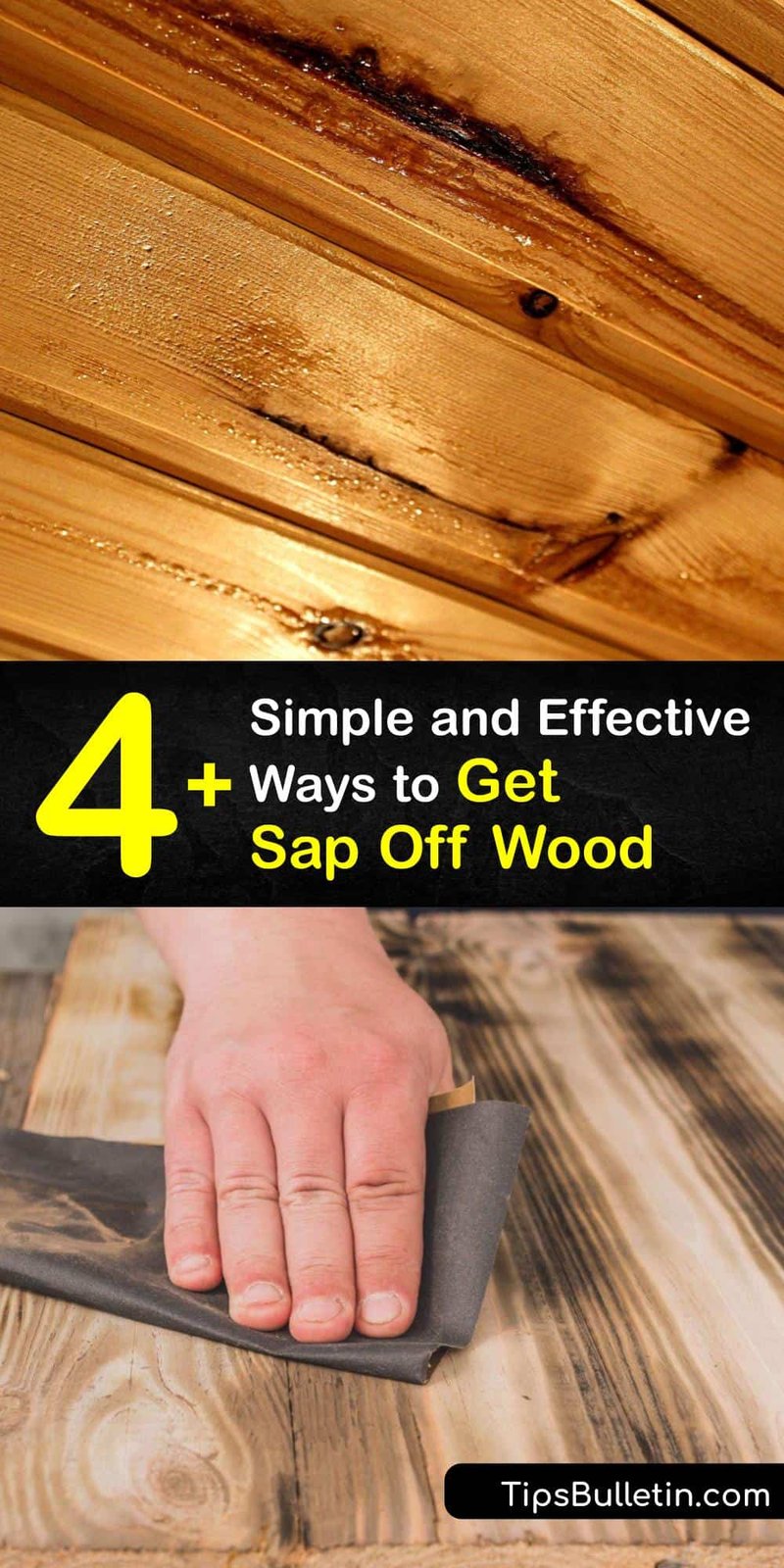
Honestly, nobody wants to grab a doorknob that feels tacky or looks cloudy. Whether it’s the entry door to your home or the handle on your back patio, you want it to look inviting—not like it’s just lost a wrestling match with a maple tree. Let me walk you through the best ways to remove tree sap residue so your exterior door hardware looks fresh, feels clean, and works right—without damaging the finish or creating bigger headaches.
Why Is Tree Sap So Difficult to Remove?
Here’s the thing about tree sap: it’s basically a natural glue. Sap is made up of sugars, resins, and other compounds that trees use to protect themselves. When it drips onto your door hardware, it hardens fast, especially under sunlight. Trying to scrub it off straight away? That usually just smears it or makes the problem worse.
You might be wondering why regular soap and water don’t do much. The reason is sap’s biology. Those sticky sugars and resins bond to metal, brass, chrome, or painted finishes like stubborn tape residue. They’re hydrophobic (which means they don’t mix with water), so rinsing won’t really break them down. That’s why it often takes specialty cleaners or a few creative household tricks to tackle the problem.
If the sap stays put, it doesn’t just look bad. Over time, it attracts dirt, interferes with locks or hinges, and can even degrade certain finishes if you let it bake in the sun. Cleaning early and with the right method is key—whether your hardware is vintage bronze, brushed nickel, or just basic steel.
What You’ll Need to Clean Tree Sap From Door Hardware
Gathering the right supplies makes this job so much easier—and prevents unintentional damage. I always start with a few basics, add some specialty options if things get tricky, and keep everything gentle on the finish.
- Microfiber cloths—super soft, with no risk of scratching.
- Mild dish soap—gentle, but not strong enough alone for tough sap.
- Isopropyl (rubbing) alcohol—great for breaking down sticky residues without harming most finishes.
- Mineral spirits or Goo Gone—for stubborn sap (test first on a hidden spot).
- Warm water—to rinse everything clean.
- Soft-bristled brush (like an old toothbrush)—for getting into grooves or embossed designs.
- Optional: Car wax or metal polish—to restore shine after cleaning.
Avoid harsh scrubbers, scouring pads, or anything abrasive. These can scratch painted, plated, or polished hardware, making things look worse.
Step-by-Step Guide: Removing Tree Sap From Exterior Door Hardware
Let’s break it down so you can follow along—no surprises.
- Step 1: Gently Wipe Away Loose Debris
Start with a dry microfiber cloth to brush off dirt or pollen. This prevents scratching the finish once you get to the sticky stuff. - Step 2: Apply Warm Soapy Water
Mix a small amount of mild dish soap in warm water. Dip another cloth, wring it out, and gently wipe the sap area. This usually softens lighter residue, but don’t expect miracles yet. - Step 3: Tackle Stubborn Sap With Alcohol
Pour a little isopropyl alcohol onto a clean corner of your cloth. Press it onto the sap for 10–20 seconds, letting it soak in. Wipe and repeat as needed. Alcohol dissolves the resin without leaving streaks. - Step 4: For Really Tough Sap, Try Mineral Spirits
If alcohol doesn’t do the trick, dab a tiny bit of mineral spirits or Goo Gone onto the sap. Let it sit for 30 seconds, then rub gently with your cloth. Test first in an out-of-sight spot to make sure it won’t damage your hardware’s finish. - Step 5: Rinse and Buff Dry
After the sap is gone, wipe with a damp cloth to remove any cleaner residue. Dry thoroughly so you don’t leave water spots or streaks.
If your hardware has small grooves or embossed details, use a soft-bristled brush dipped in soapy water or alcohol to reach into crevices. Work slowly—rushing can lead to scratches or missed spots.
How To Avoid Damaging Your Door Hardware’s Finish
Door hardware isn’t indestructible, even if it looks tough. Brass, chrome, nickel, bronze, and painted finishes each have their quirks. The wrong cleaner or tool can lead to peeling, fading, or pitting.
Let me explain with a quick example: A neighbor of mine once tried to scrub his antique brass knob with steel wool. It took the finish right off, leaving ugly scratches that never came out. Even some solvents you’d use on car paint are too harsh for door hardware.
- Always test any cleaner (especially mineral spirits or sap removers) on a hidden area first.
- Never use abrasive pads or scrubbers—stick to microfiber or soft cotton cloths.
- Don’t let solvents or removers sit too long. Wipe away as soon as you see the sap loosening.
If your hardware is painted, be even gentler—paint can peel or bubble if exposed to strong chemicals. When in doubt, try isopropyl alcohol first. It’s effective, evaporates fast, and rarely harms finishes when used in moderation.
Should You Use Commercial Cleaners or DIY Solutions?
You might be wondering if you really need a specialty cleaner, or if household items are enough. The truth is, both can work, but it depends on the sap and your hardware’s finish.
Commercial cleaners like Goo Gone or sap removers are made to break down sticky messes fast. They’re convenient and usually safe for most metals—unless your hardware has a delicate or specialty finish. Always check the label or manufacturer’s site (Schlage, Kwikset, Defiant, etc.) for warnings.
DIY solutions (like rubbing alcohol, warm soapy water, or even a little olive oil) often work just as well for light to moderate sap. They’re less likely to damage finishes—just a bit slower.
If you’re worried about damage, start with the gentlest option and only step up to stronger cleaners if you must. It’s better to wipe twice than strip your doorknob’s shine for good.
How to Keep Sap From Coming Back
Cleaning off sap is satisfying, but—let’s be real—it’s even better if you don’t have to do it again. You can’t move your door, but you can make things harder for stubborn trees.
- Trim overhanging branches that drip sap onto the doorway.
- Apply a thin layer of car wax or metal polish to the hardware after cleaning. This acts like a barrier, so future sap is less likely to stick.
- Wipe hardware regularly with a dry cloth—catching sap early is a game-changer.
- Check hardware after storms or in spring, when sap flows more freely.
Some folks use a simple cover (old washcloth, weatherproof baggie) to shield their knob in peak sap season. It’s a little quirky, but it works—especially if your door hardware is high-end or hard to replace.
What If Sap Gets Into Locks or Hinges?
This is where things get tricky. If sap seeps into the mechanics of a lock or latch, it can make things sticky, hard to turn, or even jam the cylinder. Don’t panic. The goal is to dissolve the sap without gumming up the works.
Try these steps:
- Use a toothpick or cotton swab dipped in isopropyl alcohol to target the sticky area.
- Gently work the alcohol around, then wipe dry with a lint-free cloth.
- If it’s inside the lock cylinder, use a dry graphite lubricant afterward—never oil or WD-40, since those attract more grime.
- If the lock is still sticky or doesn’t work right, you may need a professional locksmith to take it apart and clean it thoroughly.
This is especially true for smart locks or keypads—liquid cleaners may damage electronics. For brands like August, Yale, or Schlage’s electronic lines, use minimal liquid, and consult the manufacturer if you’re unsure.
Can Tree Sap Harm Hardware Over Time?
Sap might look harmless—a bit of sticky gunk—but over time, it can cause real trouble for door hardware. Here’s what can happen if you ignore sap residue:
- Corrosion: Sap can trap moisture against metal, leading to rust or tarnish—especially with cheaper finishes.
- Sticking and jamming: If sap works into moving parts, locks and latches get harder to operate or can freeze up entirely.
- Finish damage: Sun-baked sap can eat away at paints, lacquers, or plated surfaces, making the hardware look cloudy or discolored.
Regular cleaning isn’t just about looks—it’s also about making sure your doors work smoothly and last longer. A little effort every few months keeps your hardware in top shape.
Wrapping Up: Clean, Sap-Free Door Hardware Makes Life Easier
A sticky doorknob doesn’t have to be your new normal. With a few simple tools—microfiber cloth, rubbing alcohol, maybe a drop of mineral spirits—tree sap residue comes off most exterior door hardware pretty easily. The trick is using the right cleaner for the job and going slow—especially if you care about the finish.
The next time your Schlage, Kwikset, or Defiant hardware gets a sticky surprise from a nearby tree, you’ll know exactly what to do. A little patience and a gentle hand keep your entry looking sharp, feeling smooth, and working right—all season long.
